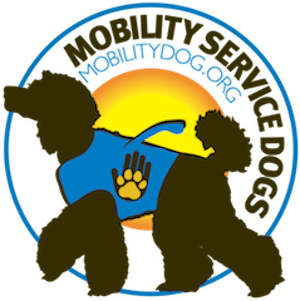Understanding Your Dog's Body Language
Bulldog Puppy Looking Intently into the Camera
Your dog talks to you by barking, whining, yelping and making other sounds. But, as with humans, a lot of what a dog has to tell us comes from non-verbal body language. That can lead to plenty of human-dog misunderstandings. Sometimes, dog body language is simply unfamiliar (after all, you don’t have a tail you can easily wag).
In other cases, a dog’s body signal may mean something very different from what the same action means for a human! Yawning, staring or looking away, for example, means one thing human-to-human and something very different from dog-to-dog and dogs-to-people.
Tail Wagging
Tail wagging signifies doggy happiness, right?
Not necessarily.
Happy Black Lab Wagging its Tail
Humans frequently misinterpret this signal. Tail wagging really just indicates some form of arousal. The tail-wagging pooch may be joyously excited, but he may also be frustrated or angry. Look at the speed, direction and position of that swooshing tail to correctly interpret the dog’s mood.
Basically, the faster the wag, the more aroused the dog. Notice the side-to-side sweeps your dog makes when he wags his whole body as you walk through the door. That’s a relaxed and happy dog. A faster cadence indicates more arousal and possibly impending aggression.
The position of the dog’s tail also conveys clues about her mental state.
Generally, the higher the tail, the more assertive the dog.
Dogs with their tails pointing down to the ground or even tucked between their legs are feeling fear and stress.
Relaxed dogs hold their tails in a neutral position, but “neutral” can also depend on the breed. Curly-tailed dogs, such as Chow Chows, have tails that naturally extend over their backs, while breeds like the Italian Greyhound have a low neutral tail position.
Eyes
Big Soft Puppy Eyes
Big soft puppy eyes signify social comfort and confidence. Hard and fixed eyes mean stress, fear and possible aggression.
When you gaze into a dog’s eyes, pay attention to the white of the eye (the sclera).
When a dog is feeling tense, the white may appear especially prominent (known as “whale eye”).
Dilated pupils may also be a sign of fear or arousal.
A relaxed dog will often “squint” so that her eyes display almost no white at all.
Be careful not to stare too intently into the eyes of a dog you don’t know. Among their wolf ancestors, staring communicates a threat. If a dog gives you a hard stare, with unblinking eyes and a stiff posture, back away and don't prolong eye contact.
Posture
Sometimes, a dog’s posture conveys an obvious message.
Small Brown and White Dog on its Back for a Belly Rub
Cowering with a hunched back is a sure sign of fear. The message is, “I’m afraid and I mean no harm.” Through cowering and a hunched back, the dog is trying to appear smaller and less threatening.
A dog that rolls on her back exposing her belly may be asking for a belly rub, especially from a familiar human. Alternatively, the dog may be displaying an appeasing posture in response to stress and anxiety.
In contrast, a dog with its weight shifted forward might simply be indicating interest, but could also be signaling an aggressive intent. A forward-leaning dog with an elevated tail may be trying to appear larger and more formidable.
Another common physical signal is the play bow. When a dog places her chest on the ground with the rump high in the air, she’s not telling you, “Let’s do some goat yoga. I love the smell of goats!” Instead, the proper interpretation usually is, “I want to play with the person or dog near me.”
Facial Expressions
White Samoyed Dog Yawning
Dogs make facial expressions, but the significance differs from what we humans mean when we engage our facial muscles to communicate.
When people yawn, for example, it usually means “I’m tired” or “I’m bored.” Dogs, in contrast, often yawn when stressed (and yes, also when they’re tired).
Lip-licking may follow a meal of tasty kibble, but it may also indicate anxiety. Your dog isn’t signaling a desire to lick your face, but rather discomfort with something in his surroundings.
And yes, your dog may smile, and the meaning may be superficially ambiguous – but not for long. Often, teeth bared in a grin mean, “Watch out for me and these impressive weapons.” You won’t mistake this show, especially if it’s accompanied by a snarl or growl. Smiling dogs also bare their front teeth, but this is a submissive display, especially if accompanied by a relaxed posture. The message is, “I’m happy and all is cool.”
Deciphering Your Dog’s Communications
Woman Petting Happy Dog Who is Gazing Up at Her
Your dog’s body language cues may also appear in combinations – whale eyes and a lowered tail, for instance. Moreover, body language is often idiosyncratic to particular animals. My shepherd-husky mix, for instance, often stares at me with her pale blue eyes. The message seems to be, “I love you and I want you to reciprocate my feelings as soon as possible – some petting or a little food would be fine.”
Become an expert in interpreting your dog’s communication to deepen the bond between you. Plus, the better you understand how your pet communicates about the world around her, the better job you can do of making her feel secure and happy.






